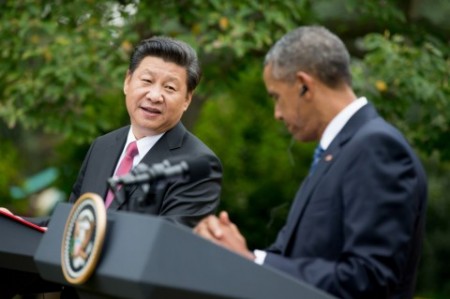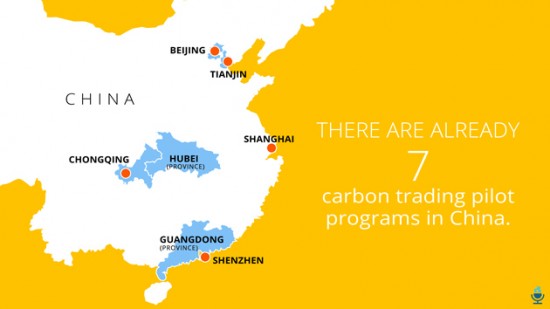October 10, 2015 – Readers ask me why I write so much about climate change and carbon. The answer I give them is this. There is no future in which we would want to live if we don’t address the growing carbon imbalance in our atmosphere and oceans.
And it is clear to me that I am not alone in this conviction. The two largest greenhouse gas emitting nations in the world, the United States and China recognize climate change as the prime issue of both our present and future. It takes considerable vision in political leadership to not limit one’s focus to the next four or five years. But Barack Obama and Xi Jinping, the presidents of both their countries are exhibiting global statesmanship on the issue. In their joint statement released on September 24, 2015, the two “reaffirm their determination to move ahead decisively to implement domestic climate policies, to strengthen bilateral coordination and cooperation, and to promote sustainable development and the transition to green, low-carbon, and climate-resilient economies.”
Their goal – a global low-carbon transformation of the world’s economy with a focus on keeping global average temperatures below the 2 Celsius (3.6 Fahrenheit) threshold considered through the consensus of the scientific community to be the maximum safe level of warming.
Both countries pledged to provide $100 billion U.S. annually to Developing World nations for climate change mitigation and adaptation by 2020 and beyond. They also pledged to get other developed nations involved in the funding of this effort.
And both countries committed themselves to making major investments in science and engineering research and development to support a transition to a low-carbon world by mid-century.
In August of this year the United States announced the Clean Power Plan to reduce carbon dioxide (CO2) emissions from energy producers by 32% from 2005 levels by 2030. In the field of energy production the U.S. federal government is creating carbon emission standards that will govern the entire country. Similar efforts are underway to create standards for methane emissions from the oil and gas sector, and from landfill sites.
The Chinese, like India, Canada and Australia, are currently focused on intensity reduction looking at lowering CO2 emissions per unit of gross domestic production (GDP). But China is far more aggressive setting reduction targets at 60-65% from 2005 to 2030. And China has announced a national cap and trade plan for its largest industry sectors to go into effect in 2017. This replaces the seven pilot cap and trade projects focused on the country’s major cities – Beijing, Chongqing, Shanghai, Shenzhen and Tianjin, and two of its provinces – Guangdong and Hubei.
For China the implementation of a national cap and trade system is only one step in a program that includes a goal to produce 20% of its total energy requirements from renewable sources by 2030.
So what will the two countries focus on in the coming decade?
- making engineering progress in the area of carbon capture and sequestration
- developing significant storage capacity to backup renewable energy sources
- improving energy efficiency in infrastructure including buildings, homes, and industry
- investing in zer0-emission vehicle technology
- expanding smart grids and distributed energy models
- expanding natural carbon sinks such as forests and wetlands
- improving farming practices to sequester carbon
- utilizing harvested CO2 in industry and for commercial products and purposes
- providing incentives to the private sector to promote low-carbon development
Both countries acknowledge the immediate need to help small island developing states and African countries most affected by rising ocean sea levels and extreme weather events associated with climate change. The U.S. pledged $3 billion to the Green Climate Fund while China, announced it would provide 20 billion Yuan to for the China South-South Climate Cooperation Fund to combat climate change. Both committed to making the funding of projects through these instruments easier to obtain for the countries most affected.
In the run up to the Paris climate summit in December the American and Chinese joint announcement gives some comfort to those of us who recognize climate change as the issue of the century. The disproportionate weighting of these two countries in tackling CO2 emissions cannot be underestimated. I only hope that after President Obama no longer occupies The White House, that those who follow will be as equally visionary. And I also hope that the leadership in China remains equally committed to the vision in the coming decades.
Regardless of what was agreed to as actions by both governments for the coming decades, the world is already in the throes of climate change and we, our children and our children’s children will feel the impact of high levels of CO2 in the atmosphere for many centuries to come. All we can do now is no longer add fuel to the fire and adapt to a very different future.










